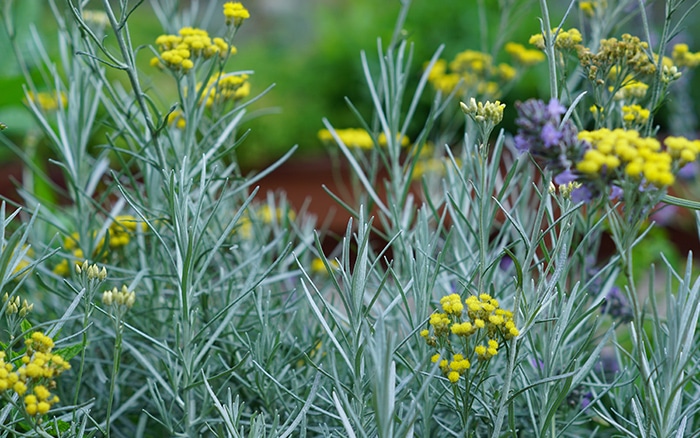Grab their attention from an early age and open young eyes to the wonder of nature
Teaching children about nature is so important. If they get an early appreciation of the outdoors, they will be hooked for life. There are loads of gardening activities kids can do with their parents and grandparents – sharing in the setbacks and successes. And it’s good for their health too. A teaching union has even called for children to be given gardening lessons to help combat obesity. The Association of Teachers and Lecturers suggested including it in the curriculum as a way to encourage kids to eat their greens, exercise and enjoy nature. Thousands of schools are already reaping the benefits of gardens. Start a new one at home today for a project that will grow and grow.
And for school gardens be a part of Cultivation Street, my campaign to encourage schools and communities to garden together.
Smell
Engaging the sense of smell is a brilliant way of attracting anyone into a garden – especially youngsters. Some amazing scents will help capture their imaginations. Plant verbena (Aloysia citrodora), a wonderful evergreen shrub that smells of lemon sherbet, or chocolate cosmos (Cosmos atrosanguineus), with its crimson, long-stalked flowers that recall dark chocolate. And Mexican orange blossom (Choisya ternata) is an aromatic evergreen shrub that, to me, smells like Vicks Sinex. Or try basil, mint or the curry plant (Helichrysum italicum) to wow your young gardeners.


Herbs
For a fresh project where space is in short supply, herbs are heaven sent. A couple of compost-filled raised beds or containers are all you need to get started. Use a multipurpose compost with grit in the bottom to aid drainage. And make sure the container has holes in the bottom to avoid waterlogging. Herbs are easy to grow and will thrive in most conditions. Though generally they’ll do best in a sunny spot. Some perennial varieties – mint, rosemary and chives – will survive all year round. Others, like basil, coriander and parsley, will die off at the end of the season and need replacing each year with fresh plants. If you’re really short on space, hanging baskets are a great alternative. Read my guide here.
Colours
Another way of encouraging youngsters is through bright colours. Let’s face it, leaves aren’t prize just green. Conifers come in a multitude of shades: blue (Colorado spruce ‘Hoopsii’), yellow (Monterey cypress ‘Goldcrest’) and even gold (Calocedrus decurrens ‘Berrima Gold’). For other shrubs, there’s about the red foliage of Photinia fraseri ‘Little Red Robin’. And there’s fabulous Pieris ‘Forest Flame’ too. There are a host of trees, plants and shrubs that can help teach kids about different classifications of plants and their many-splendored colours.

Sunflowers
Growing a sunflower from seed is a magical project – at home or at school. You’ll need a sunny spot and can start them off from seed or as young plants. Because they grow rapidly and have such a beautiful flower, it will hold their interest. And you can introduce an element of competition. There are tons of varieties. ‘American Giant’ can reach up to four metres if you’re lucky. While ‘Teddy Bear’ or ‘Big Smile’ come in at a more manageable metre or so. Find a spot with full sun in welldrained soil or pots. You’ve time – just – to get them in the ground and you should be seeing flowers by August. Read my guide to growing sunflowers.


Insects
Kids love bugs. So attracting beneficial insects is another brilliant way of capturing their imaginations. Create insect habitats easily and cheaply. Fill drainpipes with straw or put pine cones in net bags and suspending them from trees. For a more sophisticated bug hotel, build a simple wooden frame and fill it width-ways with twigs. The spaces will provide homes for everything from solitary bees to spiders, moths and ladybirds. Find out more about insects.
Fruit & Vegetables
Like herbs, growing vegetables makes a quick impact and grabs their attention. And there’s nothing quite like picking and eating your own fruit and veg, whatever age you are. Even if you haven’t got a garden area, with some simple containers or grow bags, you can get started. Dustbins are ideal for growing spuds, while shallower containers will do for carrots and onions. Tomatoes and strawberries can be grown in hanging baskets, if you’re short of space, or in containers. Bush varieties of tomato should give you a bumper harvest for sharing. Here’s a guide to 5 easy to grow crops.


Pumpkins
Grow them from seed or buy them as young plants – they produce a marvellous fruit. This will engage interest in the garden over a longer period of time. And the kids can carve faces into them at the end of October for Halloween. Pumpkins are relatively easy to cultivate but need space. Plant in a sunny spot, give them lots of water over the summer and shelter from the winds. You can use growbags if space is limited. A couple of the best-known varieties are ‘Atlantic Giant’ with its classic redorange skin, and ‘Jack Be Little’, a prolific, mainly ornamental mini pumpkin. Read about the amazing varities here.

Leave A Comment